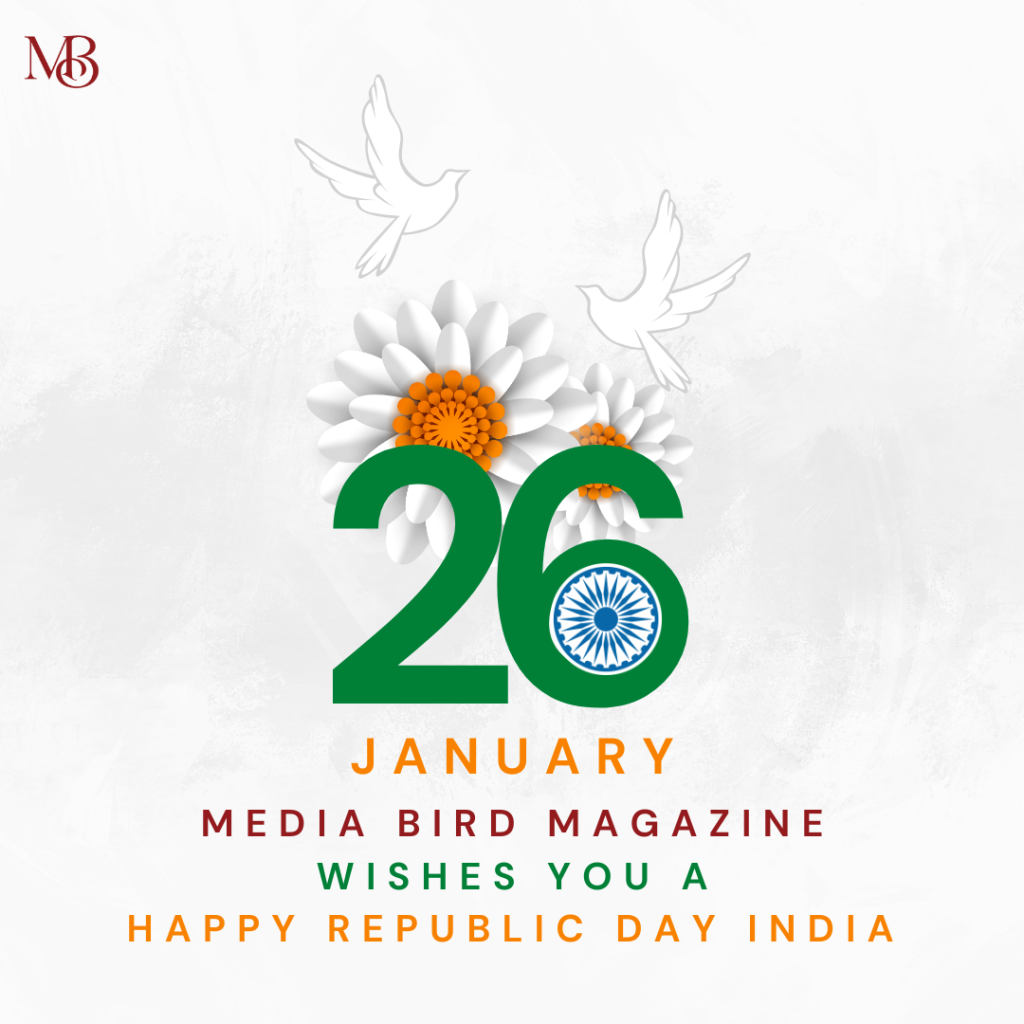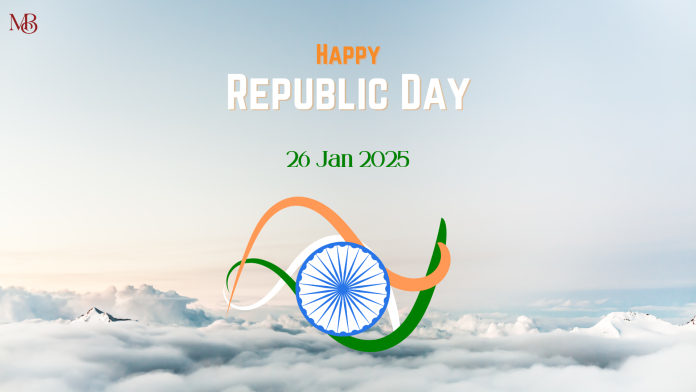India celebrates Republic Day on January 26 every year with immense pride and joy. This day marks the adoption of the Indian Constitution, which came into effect on January 26, 1950. It’s a national holiday celebrated with grandeur across the nation, reflecting the values of justice, liberty, equality, and fraternity enshrined in the Constitution. Let’s have a look into the significance, celebrations, and history of Republic Day in India.
The choice of January 26 holds deep historical importance. On this day in 1930, the Indian National Congress declared Purna Swaraj (complete independence) from British rule, which set the course for India’s struggle for freedom. To honor this pivotal declaration, the date was chosen for the Constitution to come into force, symbolizing India’s transformation into a sovereign democratic republic.

Nationwide, this day is celebrated with great enthusiasm and fervor. The main event takes place at Rajpath in New Delhi, where a grand parade showcases India’s cultural heritage and military prowess. The celebration typically features a ceremonial march past by the armed forces, vibrant performances by schoolchildren, and floats representing various states. Distinguished guests, including foreign dignitaries, are invited to witness this spectacular display.
In addition to the central festivities in the capital, local celebrations throughout the country include flag-hoisting ceremonies, cultural events, and patriotic programs organized by schools and communities. This day serves as a reminder of India’s journey toward democracy and the sacrifices made by many to secure the nation’s freedom, fostering a spirit of national unity and pride.
Flag Hoisting: The President of India hoists the National Flag. The national anthem and a 21-gun salute follow this.
Parade at Rajpath: The grand parade showcases India’s military might, cultural heritage, and technological advancements. It begins from Rashtrapati Bhavan and proceeds to India Gate.
| Segment | Highlights |
| Military Display | Tanks, missiles, and jets are showcased, representing India’s defense strength. |
| Cultural Floats | States display vibrant tableaux representing their culture and achievements. |
| Children’s Performances | Schoolchildren perform dances, adding a joyful touch to the event. |
Award Ceremonies: Gallantry awards such as the Param Vir Chakra, Vir Chakra, and Ashok Chakra are presented.
Beating Retreat Ceremony: Held on January 29, this marks the end of the celebrations with a musical extravaganza.
Historical Background of Republic Day
India gained independence on August 15, 1947, marking a significant milestone in its history. However, at that time, the nation did not possess its own Constitution, which raised concerns about governance and the protection of rights. Instead, the country was still operating under the Government of India Act, 1935, a colonial-era law that lacked the representation and vision needed for a sovereign nation.
Recognizing the urgent need for a framework that reflected the aspirations and values of its people, India embarked on the task of drafting a homegrown Constitution. This was crucial for ensuring democracy, justice, and equality in the new nation.
- Drafting the Constitution:
- The Constituent Assembly, led by Dr. B.R. Ambedkar, worked tirelessly to draft the Constitution.
- It took 2 years, 11 months, and 18 days to finalize the document.
- Key Features of the Constitution:
- Declares India as a Sovereign, Socialist, Secular, Democratic Republic.
- Guarantees fundamental rights such as freedom of speech, equality, and the right to constitutional remedies.
Republic Day Across the Country
While Delhi hosts the grand parade, this day is celebrated in schools, offices, and communities nationwide. Here are some common traditions:
- Schools and Colleges:
- Flag hoisting, cultural programs, and essay competitions are organized.
- Housing Societies:
- Residents come together to hoist the flag, sing patriotic songs, and distribute sweets.
- Television Broadcasts:
- People watch the parade live on television with family, feeling a sense of pride and unity.
Fun Facts About Republic Day
Republic Day is a significant occasion celebrated in India on January 26th each year, marking the day when the country adopted its Constitution in 1950. This day not only symbolizes the transition of India from a British Dominion to a sovereign republic but also highlights the values of justice, liberty, equality, and fraternity enshrined in the Constitution.
As the nation commemorates this monumental event, it is an opportunity to reflect on the rich history and diverse culture of India. In this spirit, here are some fun facts about Republic Day that showcase its importance and the unique traditions associated with this grand celebration.
- Longest Constitution: India’s Constitution is the longest written Constitution in the world.
- First Republic Day Parade: The first parade was held at Irwin Amphitheatre (now Major Dhyan Chand National Stadium) in 1950.
- Special Chief Guests: Every year, a head of state from another country is invited as the Chief Guest. For example, in 2023, Egyptian President Abdel Fattah el-Sisi graced the occasion.
You might also like: Is Mahatma Gandhi Really the “Father of the Nation”?
How to Participate in Republic Day Celebrations
If you wish to witness the grand parade in Delhi, here are some tips:
- Book Tickets in Advance: Tickets for the parade are available online and at specific counters.
- Arrive Early: Security is tight, so reaching the venue early ensures a hassle-free experience.
- Dress Comfortably: Delhi’s January weather is chilly. Carry warm clothes to stay comfortable.
You might also like: Celebrating the Spirit of Democracy: Republic Day 2025
Republic Day vs. Independence Day
Republic Day and Independence Day are two of the most significant national holidays in India, each commemorating pivotal moments in the country’s history that shaped its identity and values.
| Aspect | Republic Day | Independence Day |
| Date | January 26 | August 15 |
| Significance | Adoption of the Constitution | Freedom from British rule |
| Main Event | Parade showcasing national strength | Flag hoisting by the Prime Minister |
Why Is Republic Day Important?
Republic Day is a reminder of our responsibilities as citizens. It encourages us to uphold the values of justice, liberty, equality, and fraternity enshrined in the Constitution. It’s also a day to honor the sacrifices of freedom fighters and soldiers who protect our nation.
FAQs
What is the theme of Republic Day 2025?
The theme changes every year. Keep an eye on official announcements closer to the date.
Who was the first Chief Guest on Republic Day?
President Sukarno of Indonesia was the first Chief Guest in 1950.
How is Republic Day different from Constitution Day?
Constitution Day (November 26) marks the adoption of the Constitution, while Republic Day (January 26) celebrates its implementation.
Why do we have a parade on Republic Day?
The parade showcases India’s military strength, cultural diversity, and achievements to foster national pride.
Republic Day is not just a celebration but a moment to reflect on our journey as a nation. Let’s come together to honor the spirit of India on this special day! Follow our Newscast page for more such articles.


